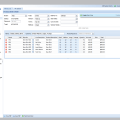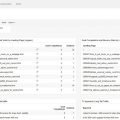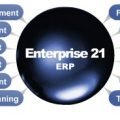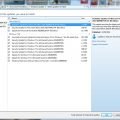Companies, like patients, are individual organisms, and that’s why determining needs as a healthcare business calls for managing personnel and more. It is important to find a provider that can diagnose needs and identify software solutions for healthcare workforce management.
Consider the Many Factors Involved in Management
Software systems can be designed to streamline operations, analyze data and help with performance metrics on an annual and longer-term basis.
Programs can track employee attendance and hours worked, leaves of absence, assigned tasks, compliance and more. Government regulations and business policies also can be monitored.
When reviewing systems, consider factors of your healthcare business, including not only how the program will be used but also the ease of learning and using the software. Of course, the type of program, whether a subscription service and its cost, are other factors to weigh.
Identify Company Needs, Match With Software Solutions
Hospitals, physician offices, dental clinics and home healthcare providers, among others, are can benefit from software programs to manage the details of personnel programs, accounting and taxes. Solutions can be individualized for small, mid-sized or large firms.
A well-chosen and designed program can enhance your business’s resources. Software can help with scheduling and personnel, so that needs are met and labor costs are monitored. The bottom line is that better management can translate into positive financial results and improved patient care.
Understand How the Pandemic Adds Economic and Employment Pressures
In this coronavirus pandemic, workforce management may take a higher priority as demand for services, patient needs and state and federal regulations intensify. The pandemic has had various impacts on healthcare needs, rules on providing treatments and employment.
With an industry-wide struggle tied to shortages of physicians, nurses and other providers, having software to manage and engage employees can be a multifaceted asset.
A software program can assist with hourly management, personnel assignments and longer-term projections of healthcare service needs. A system also can help retain valued personnel, for instance, through redeployment.
Consider Management Goals, Employee Response and Patient Care
In employment venues, the COVID-19 has impacted hours, shifts and location of jobs. Many employees have been working remotely from home. Some healthcare workers were considered essential, while others were laid off.
The industry also has broadened the practice of reaching patients through telemedicine. Businesses and employees continue to develop ways to work remotely. While unemployment has reached historic levels, hiring and jobs continue to evolve in the pandemic era.
Remember Tips for Finding Solutions That Fit
Many factors are to be considered when reviewing management and software issues. Reasons to use workforce management software include:
- Operations that lead to better patient service
- Streamlined scheduling and recording of payroll hours, including monitoring of overtime
- Improved data entry
- Managed accounting, tax and personnel benefits
- Reduced time spent on payroll and employee paperwork
Other points to review are employee satisfaction and meeting goals for patient care.
Workforce management can help make the most of human capital and labor talents, and in the healthcare industry that means reaching goals of providing excellent, patient-centered treatments.






